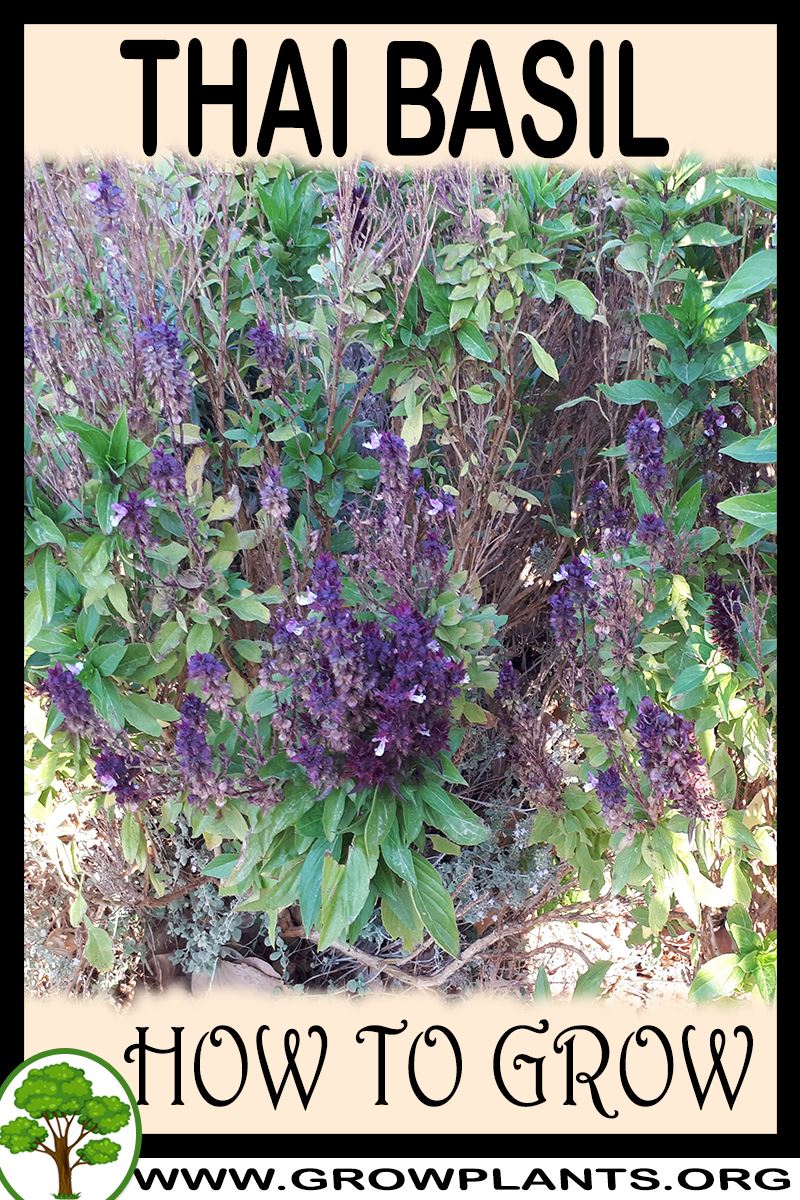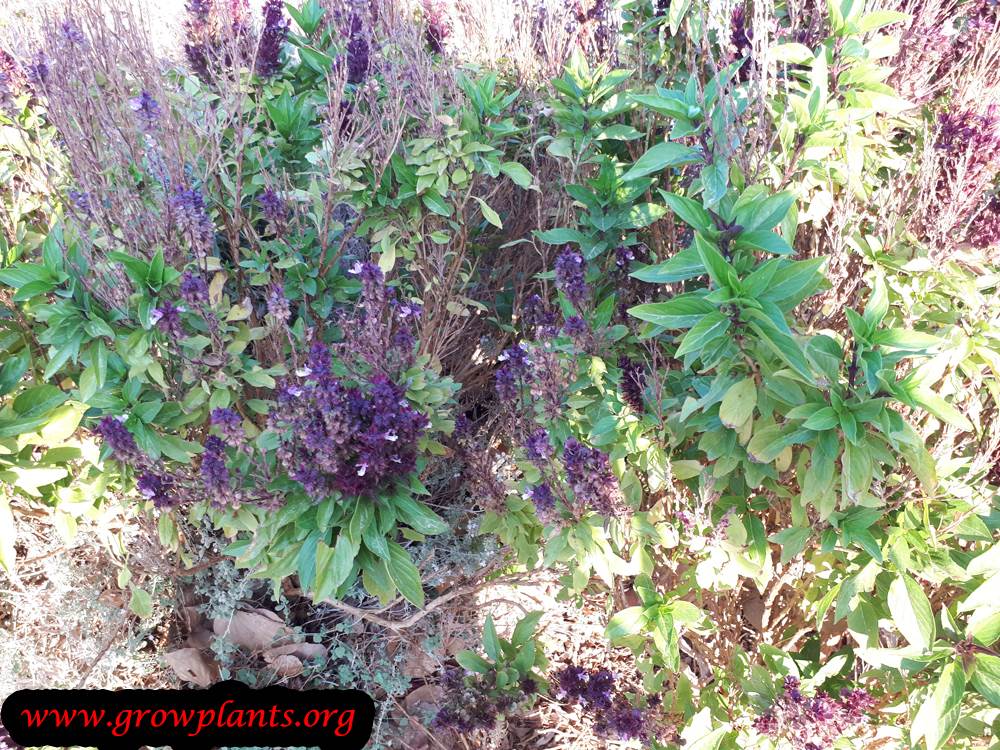
Thai basil grow and care – shrub type of basil of genus Ocimum also known as Thailand basil, Thai basil perennial or cold annual plant used as edible plant for the leaves also used as ornamental plant and it’s fragrant, can grow in mediterranean, subtropical, temperate or tropic climate and growing in hardiness zone: 10b+ (perennial), 5-10 (as annual).
Thai basil leaves
Leaves color light to dark green leaves with purple stems, leaf shape is ovate.
Flower color purple, small flowers grow on inflorescence.
Thai basil for sale – Seeds or Plants to Buy
How to grow Thai basil growing and care:
Well drained soil, Add more water in hot summer days, thinning the flower
How to care:
Add more water in hot summer days, fertilizer 2-4 year, put organic matter, prune once a year and consider to prune the bloom stems
What is the best way to start growing?
Plant / Seedling / Seed / Vegetative Reproduction
Is it necessary use vegetative reproduction in Thai basil?
Not necessary but possible vegetative reproduction
Difficulties or problems when growing:
Nothing special
Recommended planting season?
Spring
Pests and diseases:
Spring as annual, spring, summer, autumn as perennial
Pruning season:
All the season
How to prune:
Prune the inner branches
Size of the plant?
20-50cm, 8-20 inches
Growth speed in optimal condition:
Fast growing
Water requirement:
Average amount of water / Big amount of water
Light conditions in optimal condition for growing:
Full Sun / Half Shade
Is it possible to grow indoor as houseplant?
No
Growing is also possible in a pot / planter /flowerpot / containers:
Yes, when grow in container, size 5-12 liter (1.5-3 gallon) amount of water that needed, it’s to keep the soil moist and the water go out of the pot, better not to use bottom of pot, soil need to be well ventilated with good drainage, rich with organic matter, can us in potting mix or peat soil with perlite or vermiculite.
Blooming information
Bloom season:
Summer
General information about the flower
Small purple flower that grow on inflorescence
Thinning the bloom:
Should thinning the inflorescence when they start to bloom, all the strength of the plant go to the blossom
Pollination is done by:
Bees, butterfly
Edible leaves
Leaves harvesting season:
After the plant in full size you can start to trim all the season
How to harvest the leaves?
Trim branches but leave few buds on the branch
Information about leaves:
Green oval leaves
Uses of Thai basil leaves:
Pesto, spices
How to grow Thai basil from seeds
Sowing requirement:
Easy to start grow from seeds, moist soil, full sun, well drained soil
Saving seeds until sowing:
Room temperature, dry
Sowing season:
Spring after the last frost
Planting spacing:
25-30 can be sow direct
Depth of Sowing:
0.4-0.6 cm
Conditions for seeds germinate:
Moist, full sun
Watering requires for Seeds:
Small amount of water / Average amount of water
Germination time:
1-2 weeks
Condition of seedling:
Full sun, moist soil
Do the seeds require burying?
No
Scientific name:
Ocimum basilicum ‘Thai basil’
Categories
| Blooming Seasons |
|
|---|---|
| Edible Parts |
|
| Culinary uses |
|
| Flower colors |
|
| Climate |
|
| Harvest Season |
|
| Ornamental parts |
|
| Plant growing speed |
|
| Plant life-form |
|
| Plant Uses |
|
| Planting Season |
|
| Plants sun exposure |
|
| Watering plants |
|
| Hardiness zone |
|



